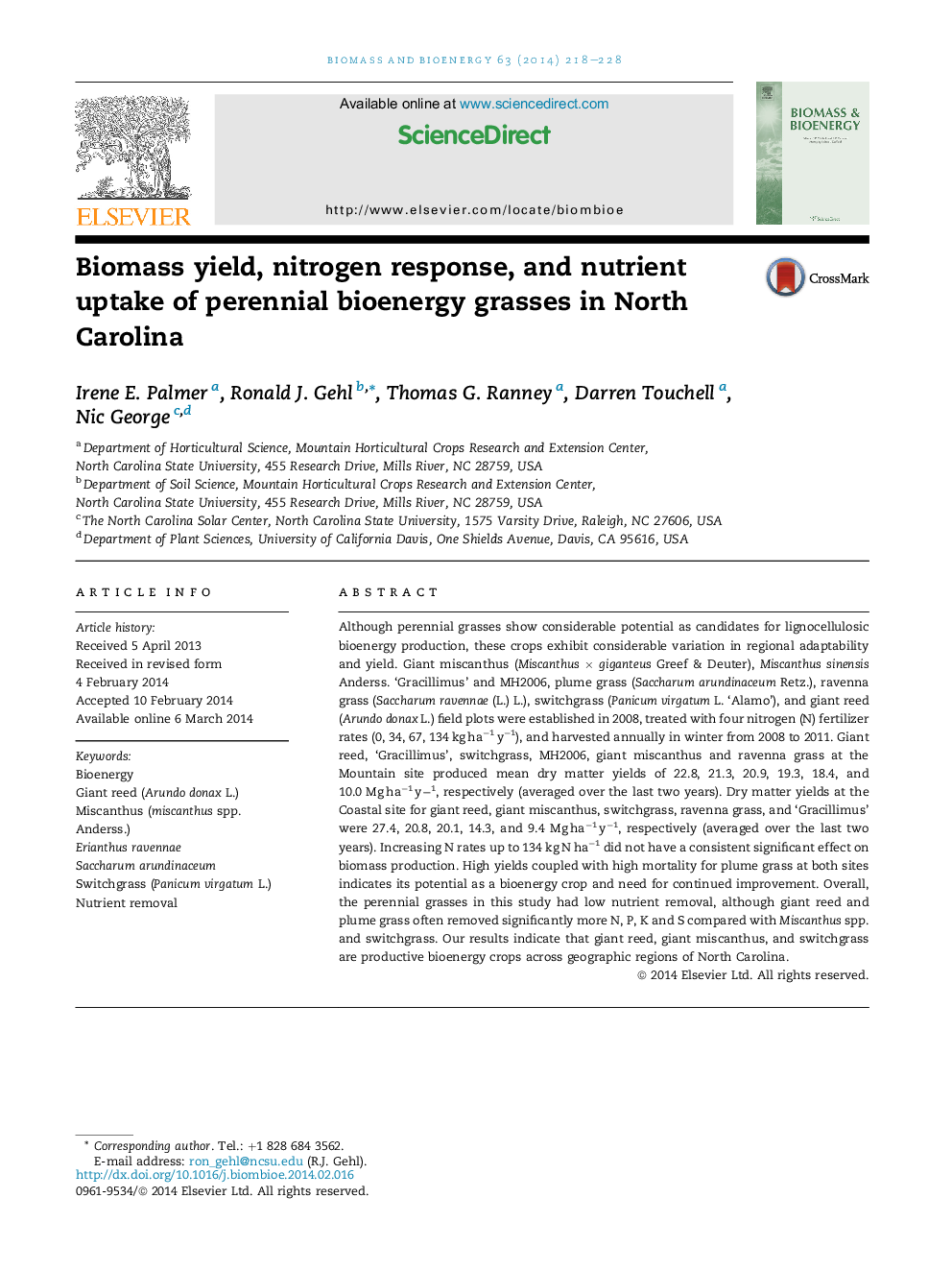| کد مقاله | کد نشریه | سال انتشار | مقاله انگلیسی | نسخه تمام متن |
|---|---|---|---|---|
| 676928 | 1459830 | 2014 | 11 صفحه PDF | دانلود رایگان |
• Yield, nutrient removal, and N response reported for bioenergy grasses in NC.
• Mean yields (final 2 harvests) span 9–27 Mg ha−1 yr−1 (site/taxa dependent).
• Taxa had low nutrient removal; some removed significantly more than others.
• N rate did not consistently significantly impact biomass yield in any taxa.
• Arundo, giant miscanthus, and switchgrass seem suitable for production in NC.
Although perennial grasses show considerable potential as candidates for lignocellulosic bioenergy production, these crops exhibit considerable variation in regional adaptability and yield. Giant miscanthus (Miscanthus × giganteus Greef & Deuter), Miscanthus sinensis Anderss. ‘Gracillimus’ and MH2006, plume grass (Saccharum arundinaceum Retz.), ravenna grass (Saccharum ravennae (L.) L.), switchgrass (Panicum virgatum L. ‘Alamo’), and giant reed (Arundo donax L.) field plots were established in 2008, treated with four nitrogen (N) fertilizer rates (0, 34, 67, 134 kg ha−1 y−1), and harvested annually in winter from 2008 to 2011. Giant reed, ‘Gracillimus’, switchgrass, MH2006, giant miscanthus and ravenna grass at the Mountain site produced mean dry matter yields of 22.8, 21.3, 20.9, 19.3, 18.4, and 10.0 Mg ha−1 y−1, respectively (averaged over the last two years). Dry matter yields at the Coastal site for giant reed, giant miscanthus, switchgrass, ravenna grass, and ‘Gracillimus’ were 27.4, 20.8, 20.1, 14.3, and 9.4 Mg ha−1 y−1, respectively (averaged over the last two years). Increasing N rates up to 134 kg N ha−1 did not have a consistent significant effect on biomass production. High yields coupled with high mortality for plume grass at both sites indicates its potential as a bioenergy crop and need for continued improvement. Overall, the perennial grasses in this study had low nutrient removal, although giant reed and plume grass often removed significantly more N, P, K and S compared with Miscanthus spp. and switchgrass. Our results indicate that giant reed, giant miscanthus, and switchgrass are productive bioenergy crops across geographic regions of North Carolina.
Journal: Biomass and Bioenergy - Volume 63, April 2014, Pages 218–228
